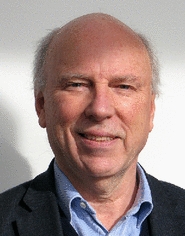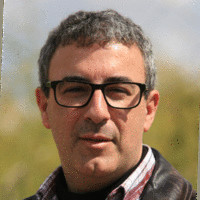Joint PRIMaRE and UK&CHN Summer School
PRIMaRE is working together with the UK-China ORE Research and Innovation Partnership Fund to organise the Joint PRIMaRE and UK&CHN Summer School, on "Hydrodynamic Modelling and Well-being in Engineering". The Summer School will take place at the University of Plymouth's COAST Lab and the University of Exeter (Penryn Campus) on 10-14 September 2018. It represents a unique opportunity to learn from recognised experts in the sector and access some of PRIMaRE’s state-of-the-art facilities and engage in UK-China ORE research activities.

The Summer School is sponsored by PRIMaRE and the UK-China ORE Research and Innovation Partnership Fund.

If you have any further enquiry about the Joint PRIMaRE and UK&CHN Summer School, please email it to [email protected].
A copy of the full programme and other additional documents can be down loaded form the documents section below.
Keynote Speakers
Model testing (operational and extremes) - Monday 10th September, from 16:30 at the Lecture Theatre 2, Roland Levinsky Building
Professor Peter Stansby, University of Manchester

Peter graduated with a BA in Engineering from Cambridge University in 1971, and a PhD in aerodynamics three years later. His working life began in industry with the Atkins Group. In 1980 he joined the University of Manchester where he was awarded a DSc. He has been a Fellow of the Royal Academy of Engineering since 2001. His research interests have focused on offshore structures, coastal engineering, marine energy (wave and tidal), and Computational Fluid Dynamics (CFD) including Smoothed Particle Hydrodynamics (SPH). He has supervised over 60 grants/contracts mainly as PI and published 140 papers in Q1 journals, with a Scopus h-index of 33, making several seminal contributions. He is now the Osborne Reynolds Professor of Fluid Mechanics at Manchester.
The lecture focuses on physical model testing for wave energy converters (WEC) covering operational and extreme conditions for power generation and survivability respectively. Froude and Reynolds are introduced followed by experience with the M4 WEC. Investigations on extreme loading and pressures including breaking waves are described for single point absorbers and fixed columns as well as M4. The importance of coupling physical and numerical modelling and basic analysis for design is emphasised. The benefits, limitations and uncertainties in physical modelling are discussed.
The development of the spar-buoy OWC wave energy converter at IST - Tuesday 11th September, from 15:00 at the Lecture Theatre 2, Roland Levinsky Building
Dr João Henriques, IST University of Lisbon

João Henriques is an Assistant Professor of Mechanical Engineering at IST, University of Lisbon. His PhD was in numerical modelling of turbomachinery. Most of his research has been dedicated to the development of oscillating water column wave energy converters, covering a broad range of topics such: as numerical modelling and optimisation, experimental testing, aerodynamic design of air turbines, and power take-off control. He participated in ten European projects in the area of wave energy. He also holds five patents, four in the field of wave energy and another in wind power.
The IST has one of the most active groups in the development of wave energy converters (WECs) based on the oscillating water column (OWC) principle. These WECs are essentially hollow structures forming a water column in the lower part and, above the water free surface, an air chamber open to the atmosphere through a duct where an air turbine is installed. The action of the waves moves the water column and, alternately, compresses and decompresses the entrapped air resulting in a bi-directional flow through an air turbine.
The lecture aims to present the development of the spar-buoy OWC from its inception to the current status. Closely linked to the design of the spar-buoy is the development of a new self-rectifying air turbine by the IST group, the so-called biradial turbine. The presentation covers the original idea behind the spar-buoy, the preliminary design stages, the numerical modelling and optimisation of the hull shape, and the experimental tests in several wave facilities (NAREC, COAST Lab and IST). The path that led to the invention of the biradial turbine is also described, as well as the one-year real sea test campaign of the turbine performed at the Mutriku wave power plant (Basque Country, Northern Spain). Besides, the talk addresses how the intellectual property affected the development process.
Documents:
Funding Bodies

↖ Back to: PRIMaRE Summer School

